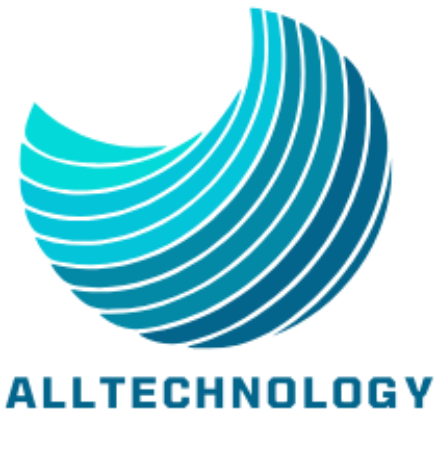Introduction
Hello Bloggers Welcome to alltechnology.in blog Today I will tell you about — How to Utilize Education Technology for Maximum Impact.
How to Utilize Education Technology for Maximum Impact
ऐसे युग में जहां प्रौद्योगिकी हमारे जीवन के ताने-बाने में बुनी हुई है, शिक्षा क्षेत्र में परिवर्तनकारी बदलाव देखा जा रहा है। शैक्षिक प्रौद्योगिकी (एडटेक) के आगमन के साथ, स्कूल, कॉलेज और विश्वविद्यालय सीखने के अनुभव को बढ़ाने के लिए डिजिटल टूल अपना रहे हैं। हालाँकि, अधिकतम प्रभाव प्राप्त करने के लिए इस तकनीक का प्रभावी ढंग से उपयोग करना ही मुख्य बात है। सर्वोत्तम परिणामों के लिए एडटेक का उपयोग करने के लिए यहां एक व्यापक मार्गदर्शिका दी गई है।

how technology can improve education
Personalized Learning
EdTech tools can adapt to each student’s learning pace and style. Adaptive learning platforms and AI-driven software analyze student performance in real-time and provide customized resources to address individual needs, making learning more efficient and effective.
Increased Engagement
Interactive tools like virtual reality (VR), augmented reality (AR), and gamified learning apps make lessons more engaging and immersive. These technologies can bring abstract concepts to life and keep students interested and motivated.
Accessibility and Inclusivity
Technology breaks down barriers to education for students with disabilities. Tools like screen readers, speech-to-text software, and other assistive technologies ensure that all students can participate fully in their education. Additionally, online learning platforms make education accessible to people in remote or underserved areas.
Collaboration and Communication
Digital platforms enable better collaboration among students and teachers. Cloud-based tools like Google Classroom and Microsoft Teams facilitate real-time communication, project collaboration, and resource sharing, making group work more effective and efficient.
Preparation for the Future
Integrating technology into education prepares students for the future workforce. Familiarity with digital tools and platforms is essential as many industries continue to integrate technology into their operations. Skills such as coding, digital literacy, and online research become invaluable.
Efficient Assessment and Feedback
EdTech allows for more efficient and timely assessment of student performance. Online quizzes, automated grading systems, and feedback tools help teachers quickly identify areas where students need improvement and provide instant feedback.
Expanding Educational Resources
The internet provides a vast amount of educational resources that are readily available. Online courses, digital libraries, and educational apps offer opportunities for self-paced learning and enrichment beyond the traditional classroom.
Enhanced Teacher Resources
Technology offers teachers a plethora of tools to enhance their teaching strategies. From lesson planning software to digital grade books and online professional development courses, technology supports teachers in becoming more effective educators.
how to utilize technology in the classroom
1. Interactive Lessons
- Smartboards and Projectors: Use interactive smartboards to display lessons, diagrams, and videos. Projectors can also be used to show multimedia presentations and visual aids.
- Educational Apps: Incorporate apps like Khan Academy, Duolingo, or Google Earth to make lessons more engaging and interactive.
2. Collaborative Tools
- Digital Whiteboards: Tools like Jamboard or Miro allow students to collaborate in real-time, whether they’re in the same room or miles apart.
- Online Discussion Platforms: Use platforms like Microsoft Teams, Google Classroom, or Edmodo to facilitate class discussions and group work outside of school hours.
3. Personalized Learning
- Adaptive Learning Software: Programs like DreamBox or Knewton adjust content based on student performance, providing a personalized learning experience.
- Gamified Learning: Tools like Kahoot!, Quizizz, or Classcraft turn learning into a game, which can increase student engagement and motivation.
4. Enhanced Assessments
- Online Quizzes and Exams: Use platforms like Socrative, Google Forms, or Quizlet for quick and efficient assessments.
- Instant Feedback: These tools can provide instant feedback to students, helping them understand their mistakes and learn more effectively.
5. Access to Resources
- Digital Textbooks and Libraries: Provide access to digital textbooks, articles, and research databases to expand learning opportunities.
- Online Learning Platforms: Platforms like Coursera, edX, or Khan Academy offer courses and resources that can supplement classroom learning.
6. Virtual and Augmented Reality
- Virtual Field Trips: Use VR to take students on virtual field trips to places they wouldn’t otherwise be able to visit, like the Louvre or the Great Barrier Reef.
- AR for Interactive Learning: Augmented reality apps can bring subjects like biology and history to life, allowing students to interact with 3D models of cells or ancient artifacts.
7. Flipped Classroom
- Pre-recorded Lectures: Have students watch lecture videos at home and use class time for hands-on activities, discussions, and problem-solving.
- Interactive Homework: Use platforms like Edpuzzle to make homework interactive and engaging, with embedded questions and videos.
8. Digital Literacy and Safety
- Teach Digital Citizenship: Ensure students understand how to use technology responsibly, including internet safety and digital etiquette.
- Digital Skills: Teach students essential digital skills, like typing, online research, and using productivity tools.
1. Understanding the Landscape of EdTech
- Learning Management Systems (LMS): Platforms like Moodle, Blackboard, and Google Classroom streamline content delivery and management.
- Collaborative Tools: Applications like Microsoft Teams, Zoom, and Google Meet facilitate communication and collaboration among students and teachers.
- Assessment Software: Tools like Kahoot!, Quizizz, and Socrative offer interactive and engaging ways to assess student understanding.
- Educational Apps: Duolingo, Khan Academy, and Coursera provide self-paced learning opportunities across various subjects.
2. Integrating Technology with Pedagogy
- Blended Learning: Combine traditional classroom methods with online activities to create a cohesive learning experience. This approach allows for greater flexibility and personalized learning.
- Flipped Classroom: Use technology to deliver instructional content outside the classroom, reserving class time for interactive activities and discussions.
- Gamification: Incorporate game elements into educational activities to motivate and engage students. Platforms like Classcraft and Minecraft: Education Edition make learning fun and interactive.
3. Fostering Digital Literacy
- Professional Development: Provide ongoing training for teachers to help them stay updated with the latest EdTech trends and tools.
- Student Training: Equip students with the necessary skills to navigate and utilize digital tools. This includes basic IT skills, internet safety, and digital etiquette.
- Parental Involvement: Engage parents in the digital learning process by providing resources and workshops to help them support their children’s education.
4. Measuring Impact and Outcomes
- Data Analytics: Use analytics tools to track student progress and identify areas where they may need additional support.
- Feedback Mechanisms: Regularly gather feedback from students and teachers to understand what’s working and what isn’t.
- Outcome-Based Assessment: Focus on the learning outcomes rather than just the process. Assess whether the technology is helping students achieve their educational goals.
Why is Education Technology Important:
Enhanced Learning Experience
EdTech provides students with interactive and engaging learning materials, such as videos, simulations, and games. This helps in making complex concepts easier to understand and keeps students more engaged and motivated.
Personalized Learning
With EdTech, educators can tailor the learning experience to individual student needs. Adaptive learning software can assess a student’s strengths and weaknesses and adjust the curriculum accordingly, ensuring that each student learns at their own pace.
Accessibility and Inclusivity
EdTech makes education more accessible to students with disabilities. Tools like screen readers, speech-to-text software, and other assistive technologies ensure that all students can participate fully in their education.
Collaboration and Communication
Digital tools and platforms facilitate collaboration among students and teachers. Cloud-based tools like Google Classroom and Microsoft Teams allow for real-time communication and collaboration, regardless of geographical barriers.
Preparation for the Future
Incorporating technology into education prepares students for the future workforce. Familiarity with digital tools and platforms is essential as many industries continue to integrate technology into their operations.
Efficient Assessment and Feedback
EdTech allows for more efficient and timely assessment of student performance. Online quizzes, automated grading systems, and feedback tools help teachers quickly identify areas where students need improvement and provide instant feedback.
Resource Availability
A vast amount of educational resources is available online. From open educational resources (OER) to digital libraries and online courses, students and educators have access to a wealth of information at their fingertips.
Infrastructure and Cost
- High Initial Costs: Acquiring the latest technology and infrastructure can be expensive. Many schools, particularly in underserved areas, struggle to fund the necessary devices, software, and internet access.
- Maintenance and Upgrades: Technology requires regular maintenance and updates, which can strain school budgets and resources.
Teacher Training and Professional Development
- Lack of Training: Teachers often lack the training needed to effectively integrate EdTech into their classrooms. Professional development programs are essential but can be time-consuming and costly.
- Resistance to Change: Some educators may be resistant to adopting new technologies due to familiarity with traditional methods or fear of the unknown.
Student Accessibility and Equity
- Digital Divide: Not all students have equal access to technology at home. This digital divide can exacerbate educational inequities, particularly for students in low-income families.
- Special Needs Considerations: Ensuring that EdTech tools are accessible to students with disabilities requires careful planning and implementation.
Technical Issues
- Connectivity Problems: Reliable internet access is crucial for effective EdTech use. Inconsistent connectivity can disrupt the learning process and frustrate both students and teachers.
- Technical Support: Schools need sufficient technical support to troubleshoot and resolve issues quickly, which can be challenging with limited resources.
Content and Curriculum Integration
- Alignment with Curriculum: Integrating EdTech tools with existing curricula can be challenging. The tools must align with educational goals and standards to be effective.
- Quality of Content: Ensuring that digital content is high-quality, up-to-date, and relevant to the curriculum is essential but can be time-consuming to curate.
Privacy and Security Concerns
- Data Privacy: Protecting students’ personal data is a significant concern. Schools must comply with regulations and ensure that EdTech tools have robust privacy policies.
- Cybersecurity: With increased reliance on digital tools, the risk of cyber attacks also rises. Schools need to implement strong security measures to protect against these threats.
Final Thoughts ( आखरी विचार )
शैक्षिक प्रौद्योगिकी में हमारे पढ़ाने और सीखने के तरीके में क्रांतिकारी बदलाव लाने की अपार संभावनाएं हैं। हालाँकि, इसकी पूरी क्षमता को उजागर करने की कुंजी विचारशील और रणनीतिक कार्यान्वयन में निहित है। एडटेक के परिदृश्य को समझकर, इसे शिक्षाशास्त्र के साथ सहजता से एकीकृत करके, डिजिटल साक्षरता को बढ़ावा देकर और इसके प्रभाव को मापकर, शिक्षक एक गतिशील और प्रभावी शिक्षण वातावरण बना सकते हैं। शिक्षा का भविष्य डिजिटल है, और सही दृष्टिकोण के साथ, हम छात्रों को सशक्त बनाने और आने वाली पीढ़ियों के लिए शैक्षिक अनुभव को बदलने के लिए प्रौद्योगिकी का उपयोग कर सकते हैं। अगर मेरे द्वारा बताई गयी जानकारी में कोई समस्या आई हो तो मुझे comment करके जरुर बताना में उस समस्या को पूरी तरह से ठीक करने की कोशिश करूंगा और मुझे Social Media पर फॉलो जरुर कर लीजिये ताकि आप अपनी समस्या मेरे साथ शेयर कर पाओ.








